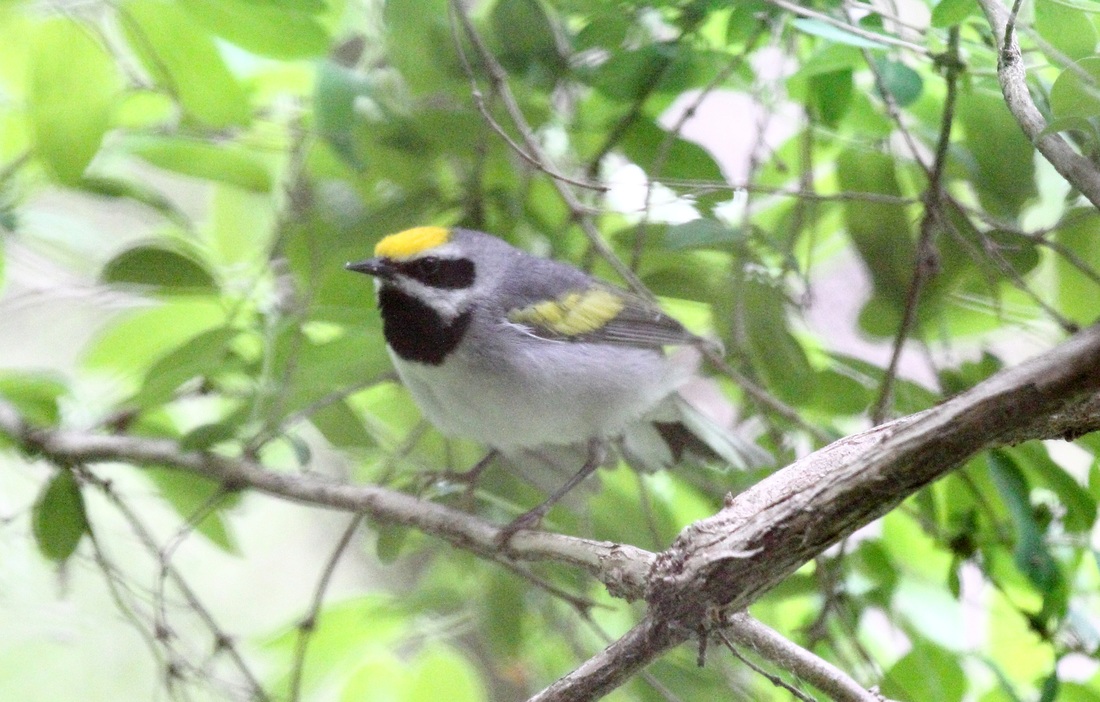|
|
golden-winged warbler
Vermivora chrysoptera
Identification:
The male of this tiny warbler has a gray back, white belly, black throat, black around the eyes, and distinctive yellow wing patches. The top of its head is also yellow. Females are more gray, white, and yellow; they lack the bold black pattern on throat and head. To complicate things, Golden-Winged Warblers sometimes hybridize with Blue-Winged Warblers and create yet more combinations of black, yellow, gray, and white. Behavior: For its breeding grounds, the Golden-Winged Warbler prefers early successional habitat and particularly areas that are recently clear-cut. Young aspen groves are one example. Thick tangles of shrubbery in these areas attract breeding birds; this species is a ground nester. Golden-Winged warblers are exclusively insectivores, gleaning from trees and shrubs. They will open up a curled leaf to extract a hiding caterpillar. The parent birds first tend nestlings at the nest, but later move them to a more forested habitat until they are grown. What brings it to the SBG? Probably only food and cover. Nearby Scotia Range is known as a breeding site for Golden-Winged Warblers, but the SBG doesn’t entirely fit the ideal criteria for nesting habitat. When can I see it? Spring through fall; but if you want to keep seeing it, support conservation efforts. The Golden-Winged Warbler has been assigned “near threatened” status owing to various factors including reforestation in its breeding range, competition from the Blue-Winged Warbler, and habitat loss in its winter range (Central America and northwestern South America). Read about how you can help in the 2013 “The Golden-Winged Warbler Conservation Plan,” available in PDF on the Internet. |


